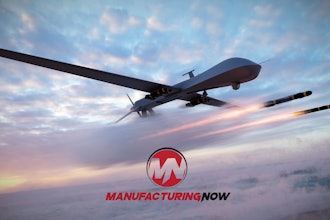As is the case with any area of plant maintenance or operations, the development of new networking technologies and protocols have revolved around improving efficiency without sacrificing performance. In this instance, added efficiency relates more specifically to demands centered around flexibility, added supervisor control and the ability to transfer and store information more securely without conflict.
Additionally, this focus on efficiency demands that any new networking products and systems provide built-in mechanisms that allow for new equipment to be easily implemented as the needs of the facility and company change. In the past, manually connecting and integrating new machinery or networks was seen as a feasible solution, but now, in the days of lean processes and just-in-time manufacturing, this type of approach can’t be considered practical from a cost or time perspective.
So, enter the era of wireless communication, open network fieldbuses and protocols that allow for common functionality and data transfer throughout the manufacturing process, as well as the equipment associated with those processes. The biggest advantage offered by recent developments revolves around technology that delivers the necessary functionality, but limits costs when it comes to implementing compatible equipment and maintaining similar, if not identical, systems. Often included, but sometimes overlooked in these cost reductions are fewer software licensing fees that could eat at profit margins and lengthen ROI timeframes.
For many, this discussion starts with open network functionality. The most significant advantage of an open architecture is that sub-systems can be built and later integrated more easily. This is what has drawn so many to the Fieldbus protocol. Fieldbus, as most of you already know, is an open standard that allows devices of different manufacturers to be integrated into one system. Fieldbus devices also offer microprocessor-based communication capabilities in facilitating a higher-quality data signal that recognizes errors much more quickly. As a result, you can get faster notifications of abnormal conditions, or the system can be used to send out other messages, like reminders for preventive equipment maintenance. Additionally, and possibly most importantly, Fieldbus offers greater interoperability amongst equipment.
There are, of course a significant number of additional open protocols to choose from, including:
- CAN
- CEBus
- WorldFIP
- BitBus
- ProfiBUS
- Lonworks
- BACNet
- X10
- EIB
- CAB
Something In Common
Another vital element of all this efficiency and interoperability revolves around growing implementation of CIP — the common industrial protocol being championed by most of the major players in this marketplace who have banded together to form ODVA. Collectively, ODVA and its members support the use and integration of DeviceNet, EtherNet/IP, CompoNet, and the major extensions to CIP — CIP Safety, CIP Sync and CIP Motion. ODVA manages the development of these open technologies, and assists manufacturers and users of the common industry protocol.
“Adoption of CIP network technology by the vendor community continues to be very high,” states Doug McEldowney, business manager for Rockwell Automation Technologies, and ODVA president. “This is evidenced by the number of vendors from around the world providing EtherNet/IP support in their products. More than 200 vendors and greater than 500 products have been identified.”
“Year over year, double-digit growth for all CIP networks is another strong affirmation that network users value the interoperability and broad uses for EtherNet/IP, ControlNet, DeviceNet, and CompoNet,” adds Brian Oulton, Rockwell Automation’s marketing manager – networks.
Supporters of CIP also point to, again, the added efficiency of implementing a unified communication architecture throughout the manufacturing enterprise. Some additional benefits could include:
- Simplified I/O control, device configuration and data collection.
- Easier information flow across multiple networks.
- The creation of multi-layer networks without added cost or complexity.
- Minimized system engineering, installation and commissioning costs.
- Greater freedom in product selection.
- A single platform for all CIP networking technologies.
More specifically, CIP is a major component within Rockwell Automation’s NetLinx Open Network Architecture, which they feel provides these four core benefits:
- Common control services. A standard set of messaging services for all three networks within the NetLinx architecture.
- Common communication services. You can connect to any network and configure and collect data from any network.
- Common routing capabilities. This saves time and effort during system configuration because no routing tables or added logic are necessary to move data between networks.
- Common base knowledge. Training is reduced when moving to different networks within this architecture, due to the similar configuration tools and features.
ODVA’s principle members include Schneider Electric, Cisco Systems, Eaton Electrical, Omron Corporation and Rockwell Automation. The most recent of these companies to step-up their ODVA-related activities is Schneider.
According to a recent press release, their increased participation relates to plans centered around the deployment of EtherNet/IP as the foundation for its network strategy heading into 2008. Schneider feels that users will benefit from greater interoperability between the largest installed base of industrial Ethernet networks — EtherNet/IP and Modbus/TCP — as well as the automation products from a growing number of vendors.
EtherNet/IP was introduced in 2001 and, as of press time, has over 1.1 million installed nodes. EtherNet/IP and Modbus/TCP are the two most popular industrial Ethernet protocols, representing over 50 percent of worldwide market share. EtherNet/IP is the first open industrial ethernet TCP/IP network with real-time control capabilities. A companion network to DeviceNet, EtherNet/IP uses the same application-layer protocol.
Use of CIP allows EtherNet/IP and DeviceNet product designers, as well as users, to apply the same integration steps for interoperability among equipment and systems from various suppliers and in multiple network sub-nets. This not only aids targeted production efficiency, but also allows for greater product selection freedom.
EtherNet/IP also provides users with the tools to deploy standard Ethernet technology for manufacturing applications, while enabling internet connections and data sharing at any point and any time throughout the facility.
Additional benefits can include:
- Complete producer-consumer services that let you simultaneously monitor, control and collect data from devices over a single network, or use a single network as a backbone for multiple distribution points.
- Compliance with IEEE Ethernet standards.
- Options for industrially-rated devices incorporating IP67-rated connectors (RJ45 or M12) with module and network status LEDs with device labels.
And it’s all in the name of added operational and information-sharing efficiency for the plant.
IMPO (Industrial Maintenance & Plant Operation) is an industry-leading monthly magazine published by Advantage Business Media for plant operations management. For more information, click here.






















